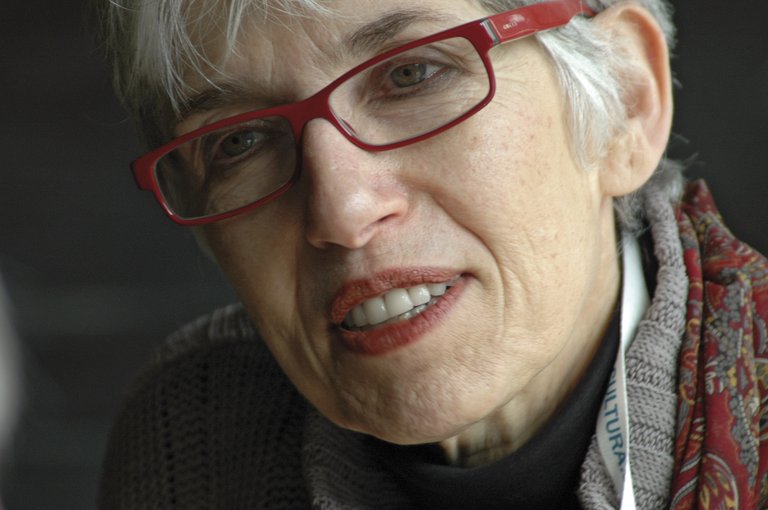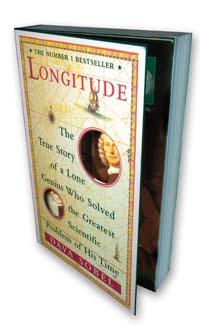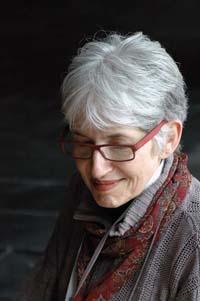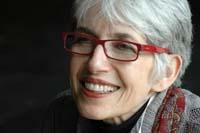"Listening to a lecture by Carl Sagan I thought I was listening to the most interesting thing in my life"

He wrote in the journal of Harvard University. It had a column called Findings. Under this title he collected the discoveries made in research or the little things he found; they were brief articles on science. Many people in the New York Times read the magazine and someone from there saw my column and offered me a job. My first job was to review the news of the week, I didn't like it because it was a job to rewrite what other editors have written throughout the week. But an opportunity arose in the scientific section of the newspaper Science Times. I applied for a change to that job and in the next two years I was there.
History began at Harvard. I met the restorer of the Museum of Scientific Instruments there. It was British, like hero John Harrison who solved the problem of length. He gave me the idea. Subsequently, in 1993, the 300th anniversary of Harrison's birth was celebrated and a symposium on the problem was organized. I wrote about the symposium in Harvard magazine and a book editor read the article. "Can you turn this into a book? asked me. Harvard magazine has been for me world (laughter).
Yes, it has to do with many topics: mapping, exploration, etc. Philip II of Spain offered an award for those who solved the problem of length. Galileo himself received money from the Spanish government. All this began two centuries before the birth of Harrison, a very long story.
It's very good, really. Michael Gambon is in charge of making Harrison. Do you know why Gambon was chosen for this role? Because he is a watchmaker, like Harrison. It was great to see Gambon working with the little pieces of the watch, he really knew what he was doing!

I wanted to work on this topic especially for people who know little about astronomy. So I wrote as I wrote, mixing stories of all kinds. I tried to relate each planet to something close, even if the reader was not interested in science. I mention astrology, science fiction, etc.
Yes! It's a real story (laughs). The Planets and Longitude are very different. These are two types of stories. It was a great challenge, I had many ideas and I had to choose. I spent two years collecting information and deciding how I would write the book. One day my agent asked me to explain the difference between the solar system and the galaxy and I thought: "He knows nothing! He is a quick man, but he knows nothing. How will I tell you? ". I formed a list of nearby things, science fiction, poetry, Bible, etc. and there were enough materials to relate to each planet. I was going to unite Mars with science fiction; Jupiter with astrology; etc. With that I already had the book!
Well, it's the best of the three. The story that counts is of great humanity. Her daughter had a very difficult life. He was very close to his father, but he was a nun and could not leave the convent. So my father and daughter kept writing letters. Galileo himself introduced his daughter to the convent at the age of 13 and never left.

On the one hand yes, through these letters. However, the cards only show an interval of ten years. The date of entry into the convent, for example, we know it because it appears in the archive of the convent itself.
No, there is no fiction in the book. I translated the letters and completed the thread with the information we have from Galileo. I could complete the story, it's not a novel. By the title, some have believed it was a novel, but it is not.
I was asking for a post from Cornell University and, in addition to Cornell, there was another university in that city. I worked at the other university. Some students at this university set up a newspaper and asked me to interview Sagan. Sagan told me yes. It was not yet famous, it was the time before the Cosmos series. I had given a lecture at my university and upon hearing that talk I thought I was listening to the most interesting thing in my life. I didn't know much about astronomy, but after listening I wanted to learn more.
It was very nice. We talked about an hour. I had to work fast for the newspaper, so when I got home I wrote the interview. The next day I called him to tell him that he was finished and that he wanted to read on the phone what was written to confirm that it was correct. He loved it, on the one hand because I wrote it very fast and on the other because I taught him the result before publishing it. He made a few corrections. It was the first time I wrote science, there were mistakes. Then I told him that I had applied for a place for Cornell University and he told me if I wanted his letter of recommendation. And I got a job.

When they were doing the series, they had a person on the team to give a way out of the problems that arose in the trips. And that person knew nothing about astronomy. And Sagan was very angry about that. He said: "I will give you the names of three people and choose one to do this work." I was one of three. He worked as a freelancer. The other two had real jobs, so they couldn't. I did, and traveled with the team in part of the series.
She also went out in a scene, but she was cut off (laughter). But, for example, in Greece... a scene was shot in an amphitheater, in the center of the room the fire was lit to simulate the Sun. And in every row of seats in the theater there were banners representing a planet. I went to that place early and saw that Saturn's pennant was placed between Mars and Jupiter and not the other way around. I changed it. And the director told me: "If Carl comes and sees him, he will kill us." That was one of my things.
Buletina
Bidali zure helbide elektronikoa eta jaso asteroko buletina zure sarrera-ontzian











